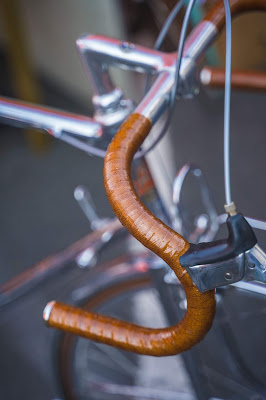Front racks and handlebar bags are the Wild West. There's no convention, rhyme, or reason for braze-on placements let alone glue-ons for carbon forks. We could push another braze-on mounting standard onto the world but, to be honest, I think we're all tired of the "standards" that exist. So we've decided to go with the flow. We've been toiling over this adjustable, sturdy, and flat-packable front rack that will fit on nearly any bike with at least a lowrider mount.
So to make this super adjustable, we've employed the use of two (or four) adjustable rods with bends to mount to the sides of the fork blades or spool eyelet. The upper parts of the rods are held in by a daruma-style clamp with adjustable positioning that can sit inboard or outboard depending on your application and fork design.
The lower part of the rod is shaped in such a way that it can mount flush on the side of your fork's blades. With so many forks out there riddled with eyelets and holes for low-riders and three-pack mounts for the Mojave Bottle Cage, you can choose where the rack will mount.
Connecting the rack to the fork crown is to simply use this little do-dad we call a Foot. This beefy mount sits flat against the fork crown and is also mounted to the same daruma-style receiver, so it can slide up or down depending on your stem positioning (for handlebar bag clearance) and general clearance needs.
One of the issues with front racks, even other adjustable-legged varieties, is the inability to transport and ship them easily. This is where the magic happens. The Integrated Decaleur or tombstone (we'll include both), is removable.
That's right. This baby flat-packs into a super sleek package for ease of transport when you travel with your bike as well as shipping (we ship to all corners of the world).
Whether you're running a Basket or a Randonneur Bag, it'll work, just switch the backstop. Or take it off all together! Clint mounted a Wald 137 Basket to the rack and used the threaded portion of the rack as a perfect zip-tie mounting point.
We're also working up some ideas for other modular backstops for additional applications. Maybe something for an XXXXXXXL Bag?
Before going into production, we need to do a couple tweaks to the hardware and subsequent re-testing, so look for them to be in early 2020!
We're also working up some ideas for other modular backstops for additional applications. Maybe something for an XXXXXXXL Bag?
Before going into production, we need to do a couple tweaks to the hardware and subsequent re-testing, so look for them to be in early 2020!















































































